
Great Western Railway (GWR) is a British train operating company owned by FirstGroup that provides services in the Greater Western franchise area. It manages 197 stations and its trains call at over 270. GWR operates long-distance inter-city services along the Great Western Main Line to and from the West of England and South Wales, inter-city services from London to the West Country via the Reading–Taunton line, and the Night Riviera sleeper service between London and Penzance. It provides outer-suburban services in West London; commuter services from its London terminus at London Paddington to the Thames Valley region, including parts of Berkshire and Buckinghamshire, and Oxfordshire; and regional services throughout the West of England and South Wales to the South coast of England. Great Western Railway also operates the Heathrow Express service.
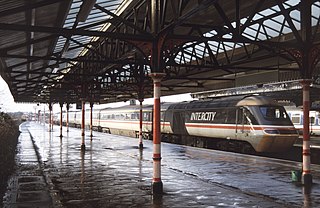
InterCity was a brand name introduced by British Rail in 1966 for its long-haul express passenger services.
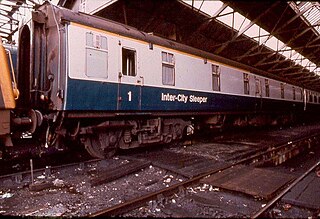
In the early hours of 6 July 1978, a fire broke out in a sleeping car train near Taunton, Somerset, England. Twelve people were killed and 15 were injured. The fire was caused by an electric heater that had been obstructed by sacks of dirty bed linen, causing it to overheat. Most deaths were due to smoke inhalation.

Exeter St Davids railway station is the principal and largest railway station in Exeter, also the busiest station in Devon.

Newport is the second-busiest railway station in Wales. It is situated in Newport city centre and is 133 miles 13 chains (214.3 km) from London Paddington measured via Bristol Parkway, and 158 miles 50 chains (255.3 km) via Stroud.
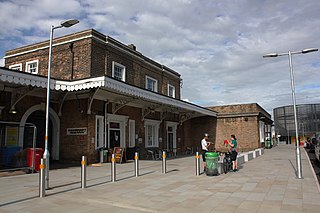
Taunton railway station is a junction station on the route from London to Penzance, 163 miles 12 chains (263 km) west of London Paddington station, measured via Box. It is situated in Taunton, Somerset, and is operated by Great Western Railway. The station is also served by CrossCountry trains and by the West Somerset Railway on special event days and by mainline steam excursions.
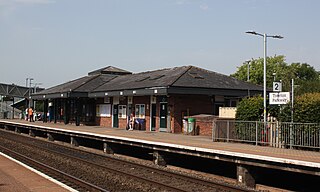
Tiverton Parkway railway station is on the Bristol to Exeter line in Devon, England. Despite being named after the town of Tiverton, it is actually located a short distance from the village of Sampford Peverell, 6 miles (9.7 km) to the east of Tiverton, and close to the junction of the M5 motorway with the A361 North Devon link road. It is 177 miles (285 km) from the zero point at London Paddington via Bristol Temple Meads.

Ivybridge railway station is situated on the Exeter to Plymouth line and serves the town of Ivybridge in Devon, England. It is 234 miles 27 chains down the line from the zero point at London Paddington, measured via Box.
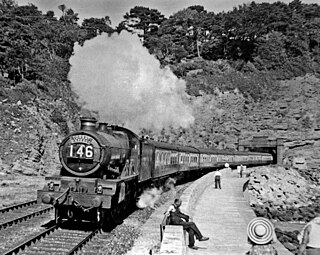
The Torbay Express is a named passenger train operating in the United Kingdom.

Penzance railway station serves the town of Penzance in west Cornwall, England. It is the terminus of the Cornish Main Line and the southernmost railway station in Great Britain, situated at milepost 326.5 miles (525.5 km) from London Paddington. The station is owned by Network Rail and managed by Great Western Railway, which also operates train services together with CrossCountry.

The Night Riviera is a sleeper train operated by Great Western Railway (GWR). It is one of only two sleeper services on the railway in the United Kingdom. The Night Riviera runs six nights a week (Sunday–Friday) between London Paddington and Penzance with one train in each direction.
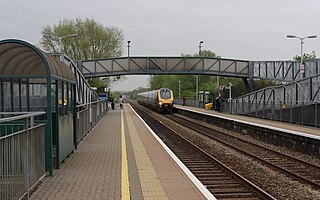
Worle railway station, on the Bristol to Exeter line, serves the Worle, West Wick and St Georges suburbs of Weston-super-Mare in North Somerset, England. It is 16 miles (26 km) west of Bristol Temple Meads railway station, and 134 miles (216 km) from London Paddington. Its three-letter station code is WOR. It was opened in 1990 by British Rail. The station, which has two platforms, is managed by Great Western Railway, the seventh company to be responsible for the station, and the third franchise since privatisation in 1997. They provide all train services at the station, mainly half hourly services between Severn Beach and Weston-super-Mare, and between Cardiff Central and Taunton. The station's car park was significantly expanded in 2013.

The Cornish Riviera Express is a British express passenger train that has run between London Paddington and Penzance in Cornwall since 1904. Introduced by the Great Western Railway, the name Cornish Riviera Express has been applied to the late morning express train from London to Penzance continuously through nationalisation under British Rail and privatisation under First Great Western, only ceasing briefly during the two World Wars. The name is also applied to the late morning express train running in the opposite direction from Penzance to London. Through performance and publicity the Cornish Riviera Express has become one of the most famous named trains in the United Kingdom and is particularly renowned for the publicity employed by the Great Western Railway in the 1930s which elevated it to iconic status. Today it is operated by the Great Western Railway train operating company.
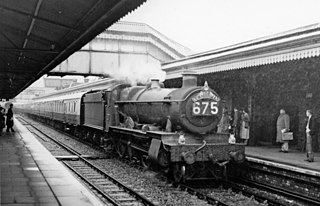
The Cornishman is a British express passenger train to Penzance in Cornwall. From its inception in the 19th century until before World War II it originated at London Paddington. Under British Railways the name was applied to a different service, starting variously from Wolverhampton, Leeds or Bradford. In 2006, First Great Western, now Great Western Railway, reintroduced the named service which now runs once per day from Monday to Saturday in both directions.
The Flying Dutchman was a named passenger train service from London Paddington to Exeter St Davids. It ran from 1849 until 1892, originally over the Great Western Railway (GWR) and then the Bristol and Exeter Railway. As the GWR expanded, the destination of the train changed to Plymouth and briefly to Penzance.
The Langport and Castle Cary Railway is a railway line from Castle Cary railway station to Cogload Junction near Taunton, Somerset, England, which reduced the length of the journey from London to Penzance by 20+1⁄4 miles (32.6 km).

The Reading–Taunton line is a major branch of the Great Western Main Line from which it diverges at Reading railway station. It runs to Cogload Junction where it joins the Bristol to Exeter and Penzance line.

The Bristol to Exeter line is a major branch of the Great Western Main Line in the West of England and runs from Bristol, to Exeter, from where it continues as the Exeter to Plymouth line. It was one of the principal routes of the pre-1948 Great Western Railway which were subsequently taken over by the Western Region of British Railways and are now part of the Network Rail system.

The British Rail Class 802 is a type of high-speed bi-mode multiple-unit passenger train designed and produced by the Japanese manufacturer Hitachi Rail. It has been operated by Great Western Railway, TransPennine Express, and Hull Trains; each of these train operating companies has given its own units a unique brand: Great Western Railway's units are branded Intercity Express Trains (IETs), TransPennine Express units are branded Nova 1s and Hull Trains' units are branded Paragons.

InterCity Sleeper was the collective name for overnight sleeper train services run by British Rail between London and Scotland, Cornwall, Wales, and Northern England in Great Britain. Services were not provided in Northern Ireland.


















